MacBook Pro 2021 (16-inch) vs Dell XPS 15 OLED: Which laptop wins?
Both are great — but which is the best one for your needs?
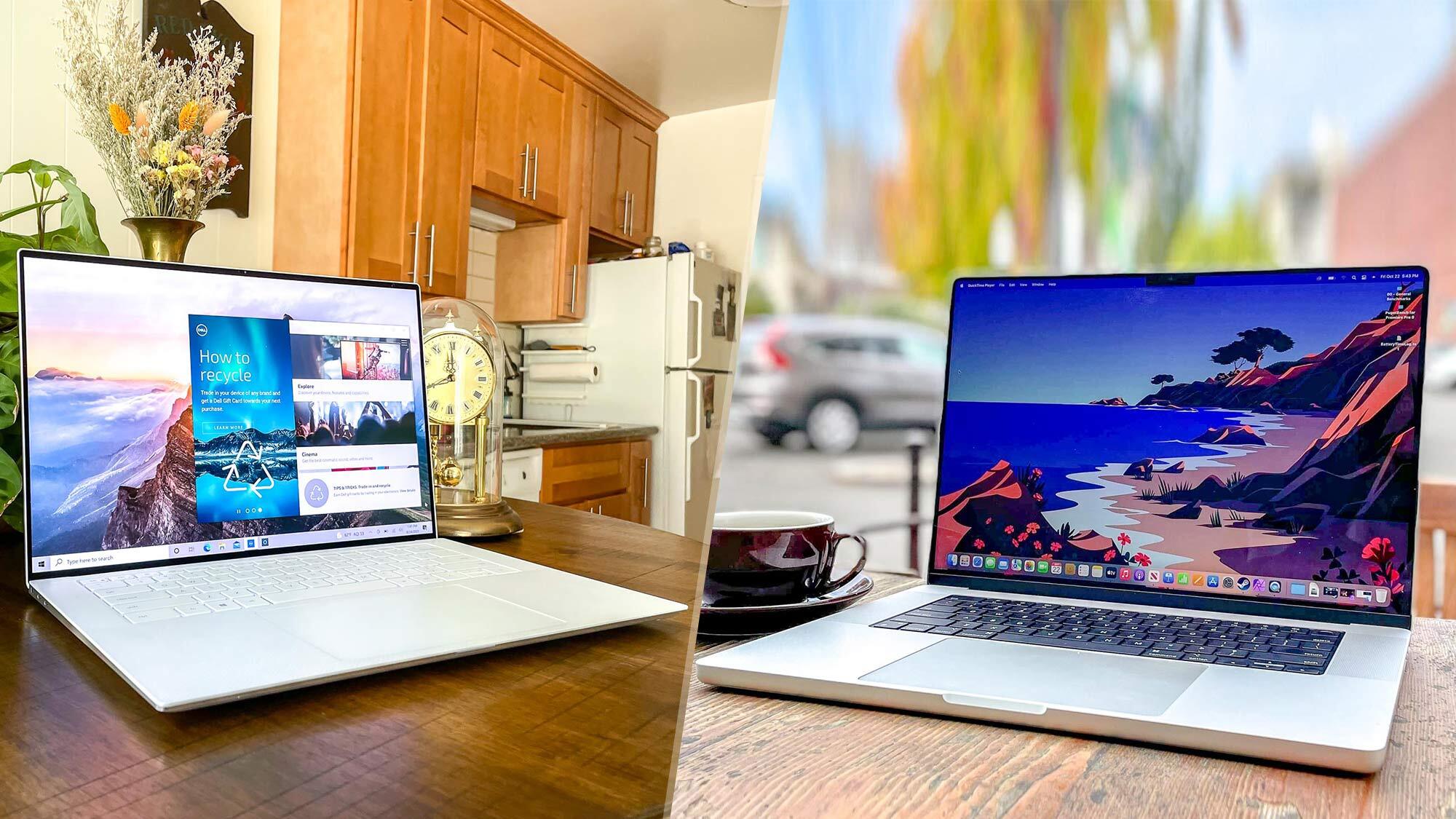
The Dell XPS 15 OLED and Apple's MacBook Pro 2021 (16-inch) are two of our favorite laptops of 2021 here at Tom's Guide. Both sport gorgeous displays and deliver excellent performance in slim, elegant chassis that are surprisingly portable for their size.
These are easily two of the best laptops you can buy right now, and both cost about the same, since upgrading the XPS 15 with an OLED display brings its price up to that of an entry-level 16-inch MacBook Pro. So how do you decide which is the right laptop for you?
To help you decide, we're pitting the two against one another to highlight each laptop's strengths and weaknesses. This face-off will show you which has the best display, the best performance, the best battery life, and ultimately the best value for your needs.
MacBook Pro 2021 (16-inch) vs Dell XPS 15 OLED: Specs
| Header Cell - Column 0 | Dell XPS 15 OLED | 16-inch MacBook Pro 2021 |
|---|---|---|
| Starting price | ~$2,299 with OLED upgrade | $2,499 |
| Screen | 15.6-inch OLED display (3,456 x 2,160 pixels) | 16.2-inch Liquid Retina XDR display (3456x2244 pixels) |
| CPU | Intel Core i7-11800H | Intel Core i9-11900H | M1 Pro (10-core CPU, 16-core GPU) | M1 Max (10-core CPU, 32-core GPU) |
| GPU | Nvidia GeForce RTX 3050 | Nvidia GeForce RTX 3050 Ti | M1 Pro (10-core CPU, 16-core GPU) | M1 Max (10-core CPU, 32-core GPU) |
| Storage | 512GB to 8TB | 512GB to 8TB |
| Memory | 16GB to 64GB | 16GB to 64GB |
| Ports | USB 3.2 Type-C (1), Thunderbolt 4 (2), SD card reader (1), headphone jack | Thunderbolt 4 (3), HDMI, MagSafe 3, headphone jack, SD memory card slot |
| Webcam | 720p webcam | 1080p FaceTime HD camera |
| Wi-Fi | 802.11ax Killer Wi-Fi 6 | 802.11ax Wi-Fi 6 |
| Bluetooth | Bluetooth 5.1 | Bluetooth 5.0 |
| Dimensions | 13.57 x 9.06 x 0.71 inches | 14 x 9.8 x 0.7 inches |
| Weight | 4.2 pounds | 4.7 pounds (M1 Pro) | 4.8 pounds (M1 Max) |
| Row 12 - Cell 0 | Row 12 - Cell 1 | Row 12 - Cell 2 |
MacBook Pro 2021 (16-inch) vs Dell XPS 15 OLED: Price
With a starting price of around $1,200 (depending on when and where you buy) the Dell XPS 15 is the cheaper laptop by a wide margin, as an entry-level 16-inch MacBook Pro 2021 costs $2,499.
However, the entry-level XPS 15 ships with a FHD+ (1,920 x 1,200 pixels) LCD display, which is plenty good enough but lacks the eye-catching vibrancy and contrasts you get with an OLED display. If you configure the XPS 15 with its optional 3.5K OLED display (which is what our review unit had, and what we recommend if you can afford it) the price goes up to roughly $2,299, though the price regularly fluctuates by a few hundred bucks due to seasonal deals.
When we reviewed the Dell XPS 15 OLED early in 2021, its price was closer to $2,400, making this a much closer competition. But unlike Apple, Dell has a habit of regularly discounting its products, making the XPS 15 OLED the clear winner here in terms of affordability.
Winner: Dell XPS 15 OLED
Get instant access to breaking news, the hottest reviews, great deals and helpful tips.
MacBook Pro 2021 (16-inch) vs Dell XPS 15 OLED: Design
Both the Dell XPS 15 OLED and the 16-inch MacBook Pro feature elegant designs that manage to cram big, beautiful displays, comfy keyboards, and decent port arrays into thin and (relatively) light chassis less than one inch thick.
The Dell XPS 15 OLED is slightly smaller and lighter than the 16-inch Pro, and the bezels around its InfinityEdge are so thin it's easy to forget they're even there. Having the OLED display is especially nice in this regard, because when you're watching something with black around the edges the bezels blend right in, effectively disappearing from view. At 4.2 pounds, it's not exactly the lightest laptop, but in our hands-on testing we found the XPS 15 OLED wasn't too painful to carry around in a backpack or messenger bag all day.
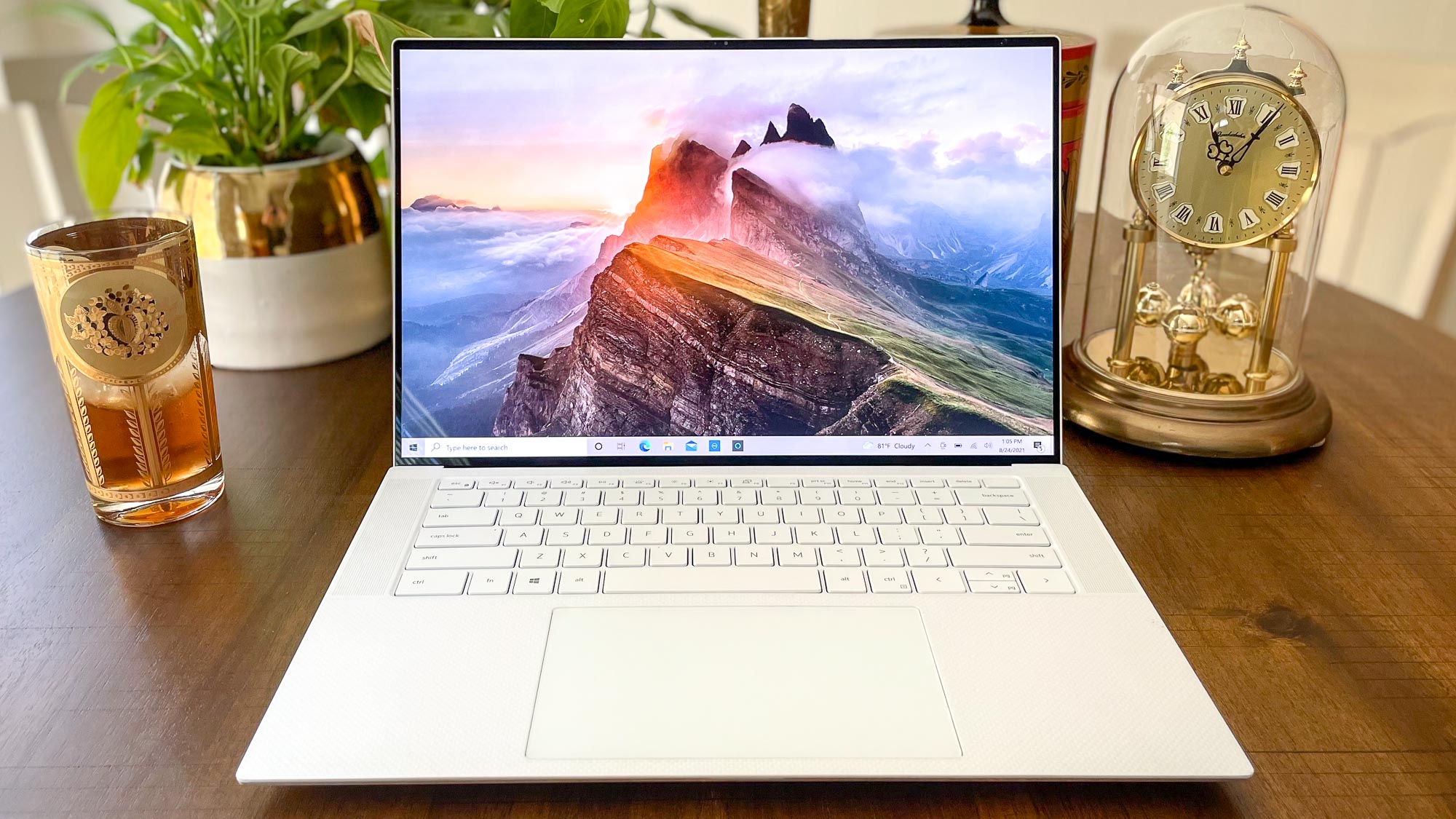
Apple's 16-inch Pro is a bit bigger and heavier, though Apple's done a lot to improve its design compared to prior models. While it's roughly the same size and weight as prior 16-inch Pros, the 2021 model has been improved with a flatter lid, a row of function keys that replace the controversial Touch Bar, and thinner bezels around the display. They're not quite as thin as those on the Dell XPS 15 OLED, but unless you're a real stickler for screen space it doesn't make a big difference.
What might make a difference is how you feel about the small black notch which extends down past the top bezel on the 2021 MacBook Pros to house the webcam. In my hands-on testing I found the notch easy to ignore, and after a while I even grew to appreciate how it makes the Pro stand out from other laptops.
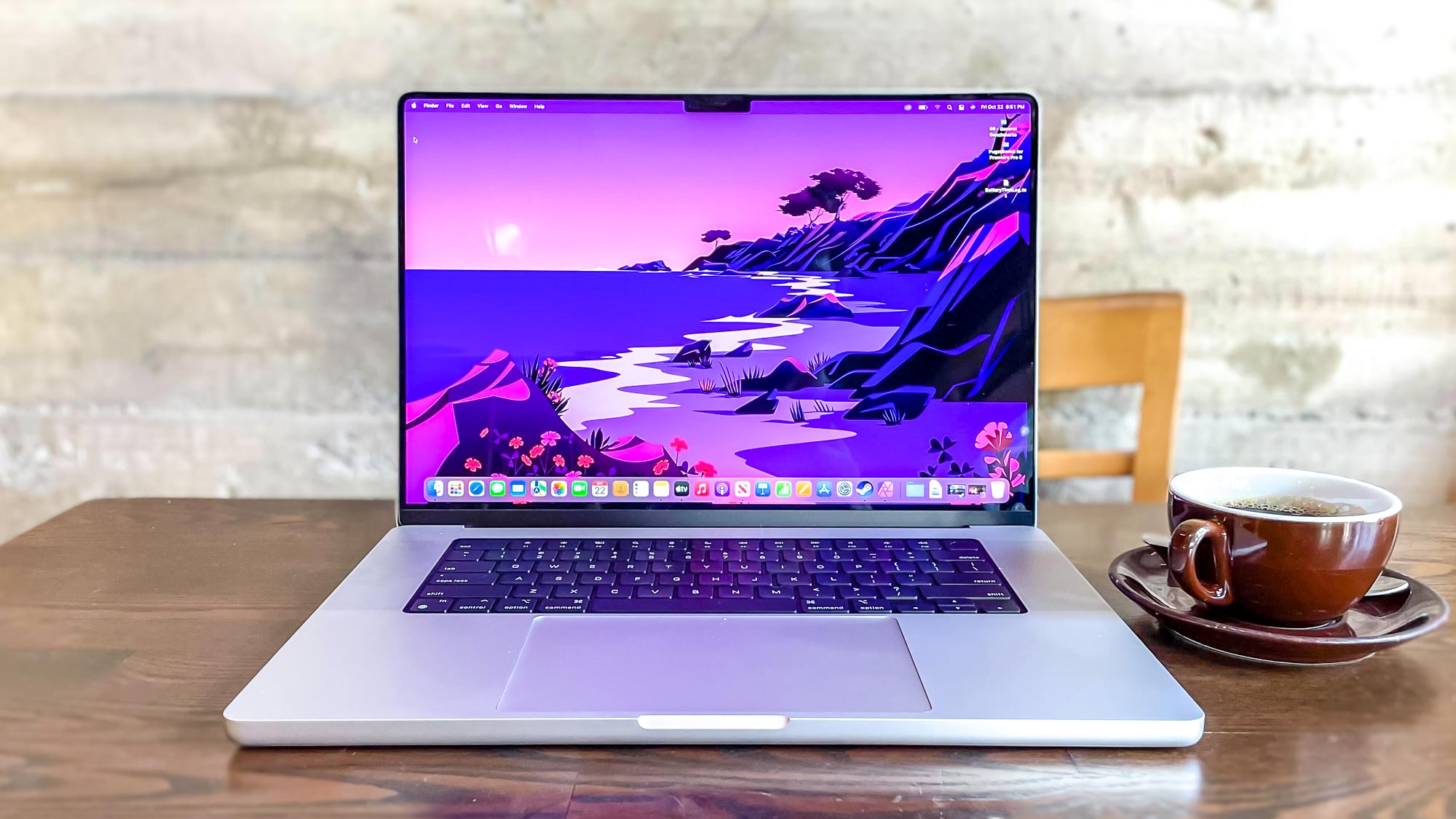
Both of these laptops are well-designed, with spacious, comfy keyboards and easy-to-use trackpads. But the Dell XPS 15 OLED is just a bit lighter and smaller than the 16-inch Pro, with a slightly more attractive display design. It's neck-and-neck, but we have to give this one to the XPS 15 OLED.
Winner: Dell XPS 15 OLED
MacBook Pro 2021 (16-inch) vs Dell XPS 15 OLED: Display
Both of these laptops sport big, beautiful displays, making them great for watching videos, playing games, or (if you absolutely have to) getting work done. They use two different display technologies (OLED vs. mini-LED) that both deliver higher brightness levels, better contrast, and more vibrant colors than you'll see on traditional LCD displays.
The OLED display is an optional upgrade for the Dell XPS 15, but after spending time with a number of both OLED and non-OLED XPS laptops I highly recommend you invest in OLED if you can afford it. The 3.5K OLED touchscreen on the XPS 15 makes just about everything you do on it look better, in part because each pixel on an OLED screen is its own individual light source that can be switched on or off independently. That means that when a pixel is black, it's switched off and thus very, very black, which allows the display to achieve much better contrasts between light and dark than most non-OLED displays.
In my experience, that means that when you're watching something (especially 4K HDR content) on the Dell XPS 15 OLED you'll notice more subtle gradations in the color and brightness of the image than you would on a non-OLED model. It's a small but significant difference, and one that's made it hard for me to go back to using non-OLED displays. In fact, after reviewing the XPS 15 OLED I went ahead and upgraded my 4K Roku TV to an LG CX OLED TV, just to enjoy the same display quality on a much bigger screen.
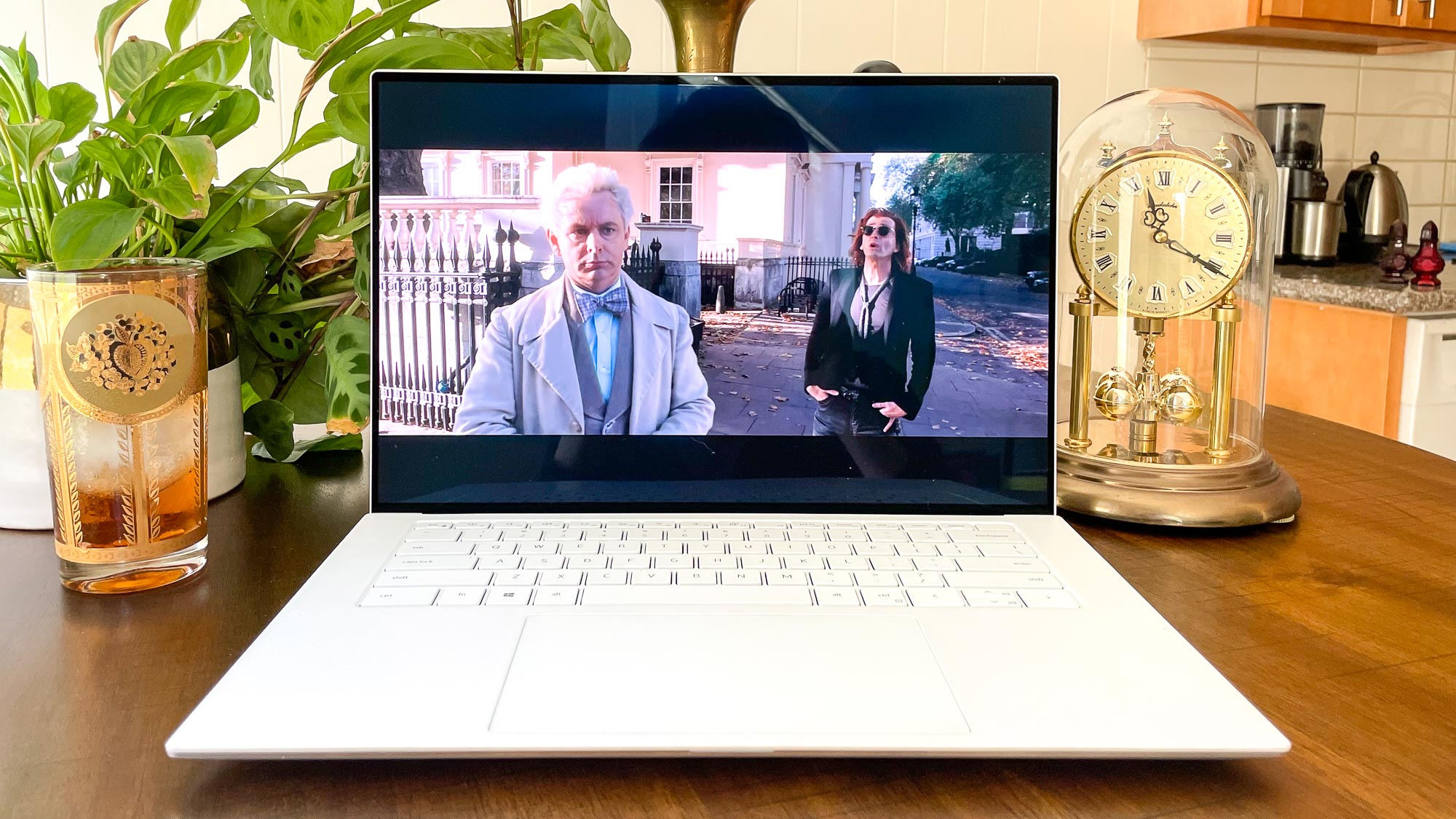
As good as the XPS 15 OLED is, the Liquid Retina XDR display on Apple's 2021 MacBook Pro is no slouch either. It's a mini-LED display, which means the LEDs used to backlight the screen are about a fifth the size of those used in most LCD displays. Since they're much smaller, Apple can squeeze a lot more of them behind the screen, and that gives the MacBook Pro much finer control over which pixels are lit and which are dark. This in turn allows it to achieve much brighter brights, darker darks, and better contrasts than displays with bigger LEDs. Mini-LED displays can deliver image quality that's competitive with OLED displays, and they're cheaper to make than OLED screens.
That's a long way of saying the 2021 MacBook Pro's display makes photos, videos, and games look about as good as they do on the XPS 15 OLED. I reviewed both laptops, and if you displayed the same content on both side-by-side I'd have a hard time telling you which was better. They're about the same resolution too, though Apple's laptop has a slight edge in terms of how many pixels it can display (3456 x 2234 pixels for the 16-inch MacBook Pro 2021 vs 3,456 x 2,160 pixels on the XPS 15 OLED). Apple's laptop also has a higher refresh rate than the Dell XPS 15 OLED, which is stuck at 60 Hz compared to the MacBook Pro 2021's 120 Hz adaptive refresh rate.

We subjected each laptop to a battery of display tests in our lab, and we found that the 16-inch MacBook Pro 2021 can achieve higher brightness levels than the XPS 15 OLED. Both deliver pretty good color accuracy, as each earned a Delta-E score of 0.21 (the closer to 0, the better). The Dell XPS 15 OLED achieved slightly more vibrant colors than the 16-inch Pro, displaying 120.1% of the sRGB color spectrum compared to the 2021 Pro's 109.3%. However, that's not necessarily a good thing, as a score of 100% is considered most accurate.
Given those scores and the higher refresh rate of the MacBook Pro's display, we have to give this category to Apple. It's nice that the OLED display on the XPS 15 is also a touchscreen, but as beautiful as it is (once you wipe off the fingerprints), if you care about brightness, color accuracy, or refresh rate the MacBook Pro is the better laptop for you.
Winner: Apple MacBook Pro 2021 (16-inch)
MacBook Pro 2021 (16-inch) vs Dell XPS 15 OLED: Ports
Having a variety of ports makes a laptop a more versatile and useful device, which is why it was so nice to see Apple add an HDMI out and an SD card reader to the lineup of Thunderbolt 4/USB4 ports on the 2021 MacBook Pros.
Alongside those two welcome additions, the 16-inch MacBook Pro 2021 sports three Thunderbolt 4/USB4 ports spread across both sides, which gives you some options about what to plug in where. You can also charge via these ports, for even more flexibility. Apple's also brought back MagSafe charging with a MagSafe 3 charging port, which is nice to have since the magnetic connector is both easy to plug in and quick to break away in the event something yanks on the laptop or charging cord. Plus, there's a headphone jack, which isn't always guaranteed on Apple products.
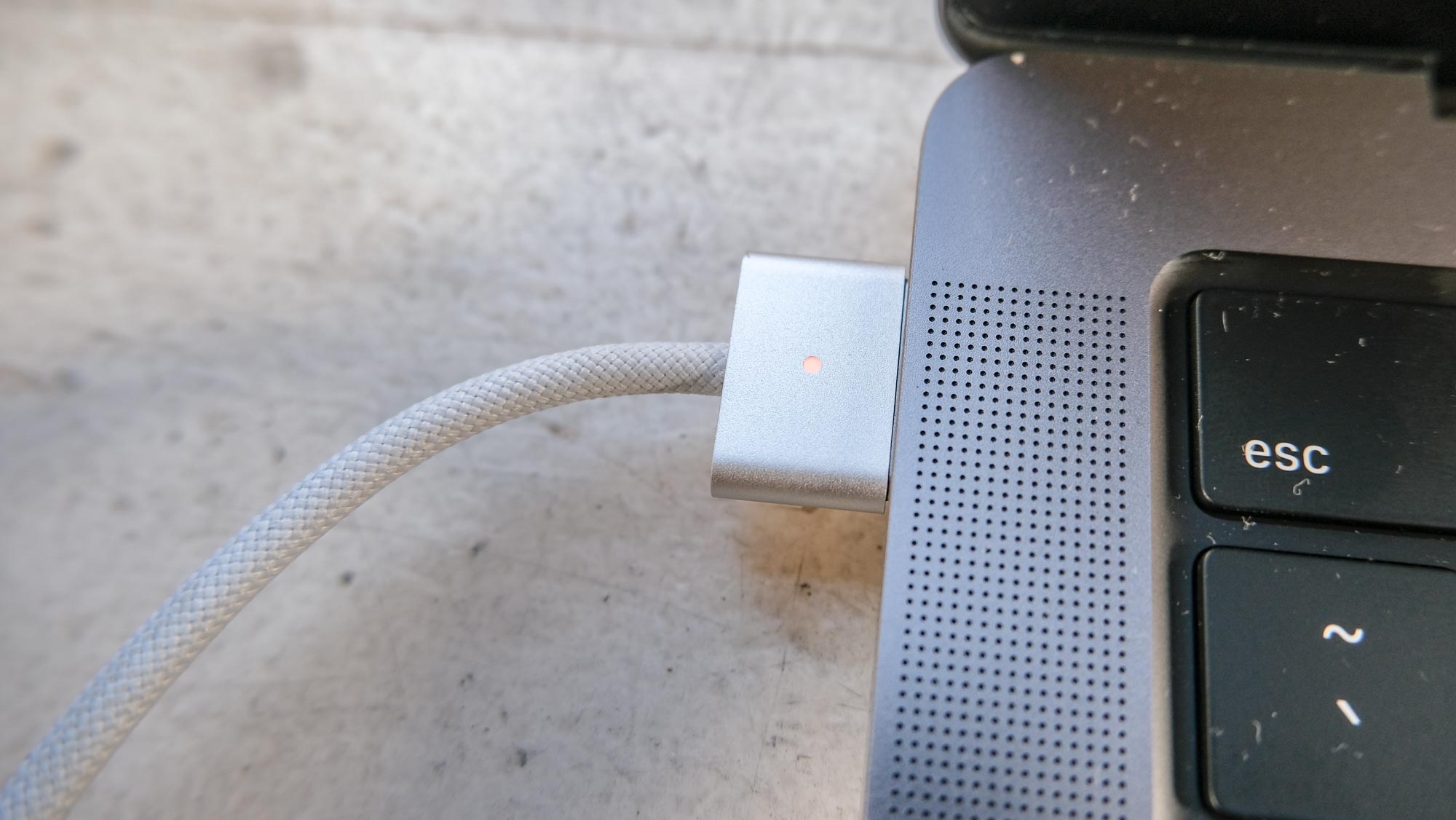
The Dell XPS 15 OLED doesn't offer quite as many port options, but what it has is good enough for most people. Specifically, it has three USB-C ports spread across both sides, which again gives you a lot of flexibility on where to plug in your charger and accessories. It also offers an SD card reader and a headphone jack, as well as a Kensington security slot that you can slide a Kensington lock into to prevent theft.
Dell also packs in a USB-C to USB-A adapter with the XPS 15 OLED, a nice touch that saves you having to buy one of your own if you want to plug in an older accessory. I wish Apple had shown MacBook Pro 2021 customers the same courtesy. Even so, the Pro's HDMI out and MagSafe charging port give it a slight edge in terms of port options.
Winner: Apple MacBook Pro 16-inch (2021)
MacBook Pro 2021 (16-inch) vs Dell XPS 15 OLED: Performance
Both of these laptops are powerful enough to handle just about anyone's daily workload without complaint. But when we compare the performance of these two laptops, there's no question the 2021 MacBook Pro beats the XPS 15 OLED in just about every test we put them through. That's largely thanks to the remarkable power and efficiency of Apple's M1 Pro and M1 Max chips, which make their debut in these 2021 Pros.
For the purposes of this comparison we're going to use the benchmark results of the 14-inch Pro with the weaker M1 Pro because that's the chip you'll get with an entry-level 16-inch MacBook Pro, whereas our 16-inch MacBook Pro review unit arrived with an upgraded M1 Max chip. However, based on our testing the M1 Pro is nearly as powerful as the M1 Max in most applications, so don't feel like you're missing out if you choose not to upgrade to an M1 Max.

First, let's compare the results we saw when we put each laptop through the Geekbench 5.4 multicore CPU benchmarking test. Our Dell XPS 15 OLED review unit (Intel Core i7-11800H CPU, Nvidia GeForce RTX 3050 Ti GPU, 16 GB of RAM, 512 GB SSD) earned a score of 7,477, which is quite good for an ultraportable laptop. But our 14-inch MacBook Pro 2021 review unit (M1 Pro w/ 10-core CPU and 16-core GPU, 32 GB of RAM, 1 TB SSD) achieved a remarkable score of 12,477, handily beating the XPS 15 OLED.
In our video editing test, which tasks each laptop with transcoding a 4K video file down to 1080p using Handbrake, the 2021 MacBook Pro was nearly twice as fast as the XPS 15 OLED (4:55 vs 8:10).
And while the XPS 15 OLED is better equipped to play most PC games thanks to its discrete Nvidia GPU, the 2021 MacBook Pros are no slouch in the gaming department either. Instead, they're handicapped by the fact that many game developers don't port their games to Macs and don't optimize them for Apple silicon.
Keep that in mind when I say that when we tasked each laptop with running the graphical performance test in Sid Meier's Civilization VI: Gathering Storm (which we use as a benchmark because it runs on a broad variety of machines), the Dell XPS 15 OLED was able to deliver more frames per second than the M1 Pro-powered MacBook Pro. Specifically, the Pro achieved 46.19 frames per second running the benchmark at 1,512x 982 (the maximum resolution the game would let us run the test at) while the XPS 15 OLED delivered 67.1 fps at 1080p (1,920 x 1,080 pixels) and 41.9 fps at 3.5K (3,456 x 2,160 pixels).
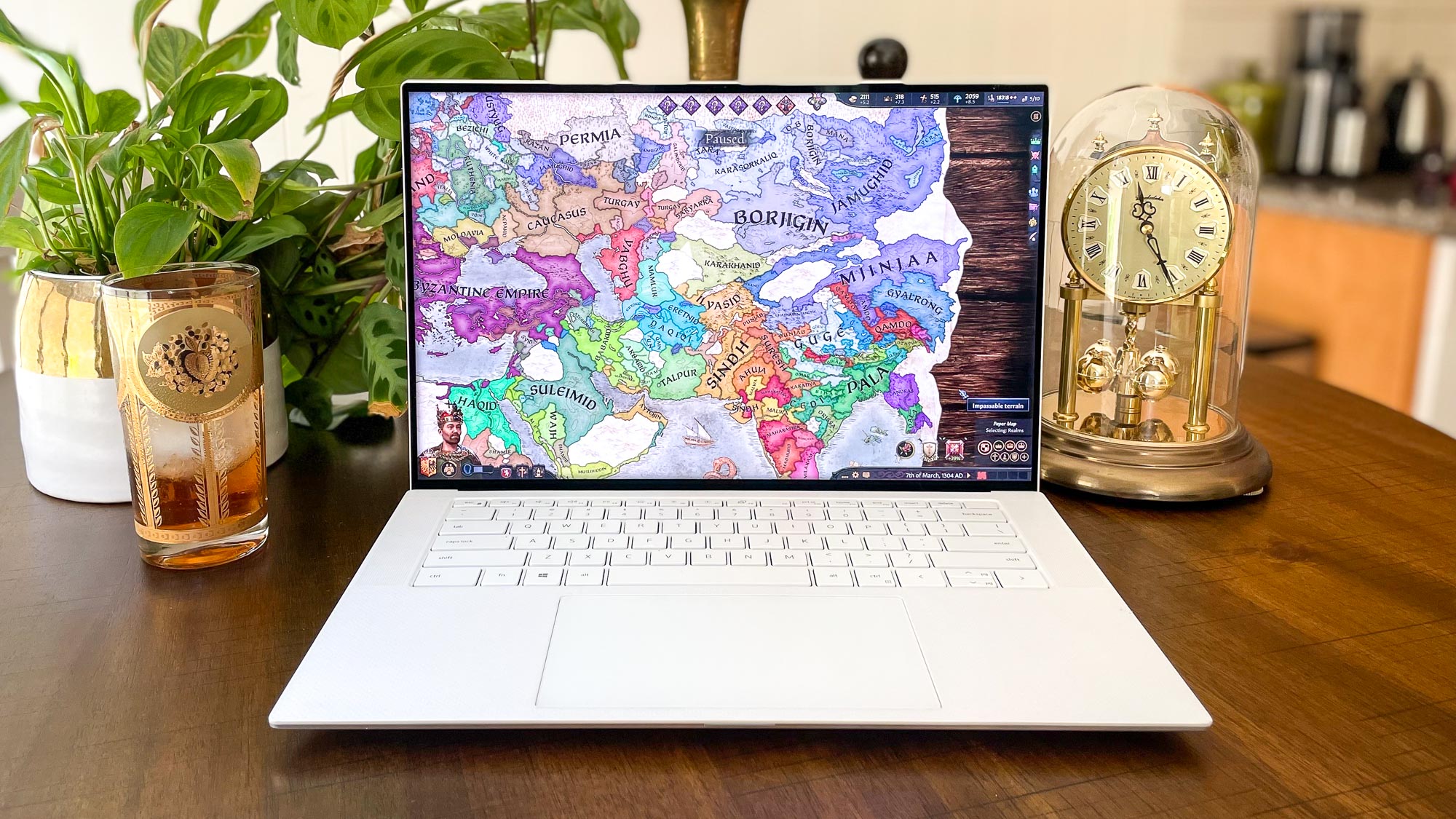
Admittedly, it's very odd that we couldn't convince Civ VI to run its graphical benchmark in a higher resolution on the 14-inch Pro. We were able to convince it to run in 1080p on the 16-inch Pro with its improved M1 Max chip, but even then the Pro achieved only 46.1 frames per second. This is a good example of how hard it can be to get the best gaming performance out of a MacBook, for reasons that aren't entirely Apple's fault.
So while you'll get better gaming performance out of the Dell XPS 15 OLED, overall we have to declare the MacBook Pro the clear winner here. We didn't even mention the performance benefits of its 16-core Neural Engine (which helps out with machine learning tasks and image signal processing) and dedicated media encode/decode engines, which can help boost performance when editing video.
Winner: Apple MacBook Pro 2021 (16-inch)
MacBook Pro 2021 (16-inch) vs Dell XPS 15 OLED: Audio
Speakers are rarely the first thing we think about when we're talking about buying a new laptop, but unless you always work with headphones (or in silence) they'll have a big impact on your daily life.
Both of these laptops feature decent speaker setups, with special cutouts on either side of the laptop (just below the keyboard deck) that help the sound quality remain loud and clear even when you have them on a table or lap. The Dell XPS 15 OLED gets quite loud, and its four-speaker array delivers treble and vocals that sound great even from several rooms away, though the bass lacks punch.
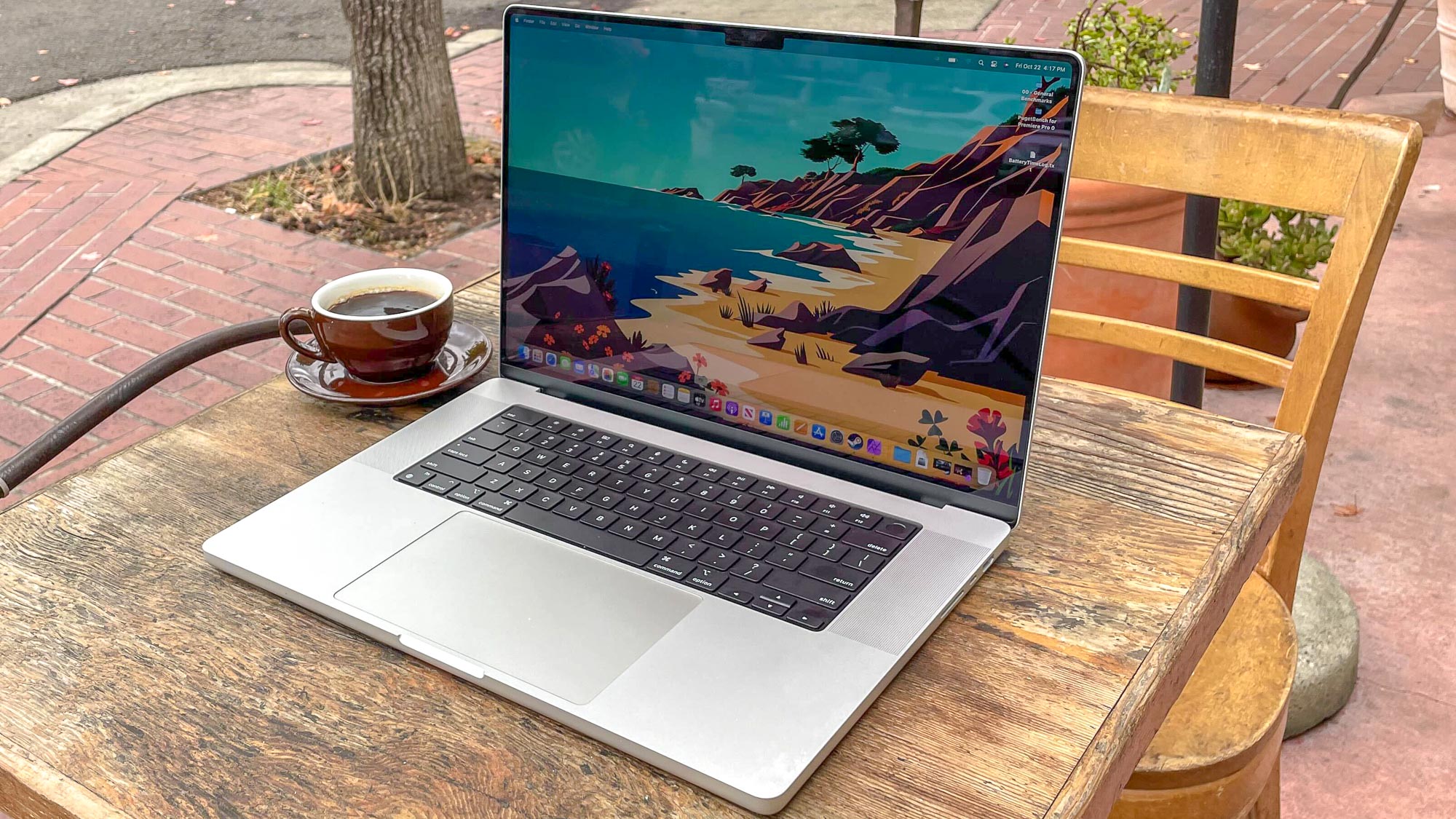
As good as they are, in my experience the Dell XPS 15 OLED's speakers can't quite match the six-speaker setup in the 16-inch MacBook Pro 2021. Not only does it deliver warm, resonant vocals even at high volume, but the 2021 Pro kicks out deeper, more impactful bass than the XPS 15 OLED or, indeed, any Windows laptop I've tested. So if sound quality is important to you, the winner here is Apple's laptop.
Winner: Apple MacBook Pro 2021 (16-inch)
MacBook Pro 2021 (16-inch) vs Dell XPS 15 OLED: Webcam
If you care about how you look on video calls, the Dell XPS 15 OLED's 720p webcam might leave you feeling a bit underwhelmed. While it's completely serviceable (indeed, I use it for a lot of my weekly meetings), in my experience it captures images and video that look washed-out and grainy.

The 2021 MacBook Pro's 1080p webcam makes you look quite a bit better by comparison, as it does a better job of capturing details and gradations in light and shadow.

However, note that the XPS 15 OLED also has an IR camera that lets you use Windows Hello to log in via facial recognition, if you so choose. The MacBook Pro 2021, by comparison, offers no option to log in via Face ID. Still, unless you really love logging in with your face we have to say the winner here is Apple's laptop.
Winner: Apple MacBook Pro 2021 (16-inch)
MacBook Pro 2021 (16-inch) vs Dell XPS 15 OLED: Battery life
We test the battery life of every laptop we review at Tom's Guide by tasking it with endlessly browsing the web over Wi-Fi, with its screen brightness set to 150 nits. The Dell XPS 15 OLED performed well enough in that test, lasting 6 hours and 58 minutes, but that's not really enough to keep you from having to worry about finding a place to plug in during a busy workday.
Apple's 16-inch MacBook Pro absolutely smoked the XPS 15 OLED in this regard, as it lasted 15 hours and 31 minutes in the same test. That beats even Apple's 14-hour estimate, and it's nearly double the battery life of the XPS 15 OLED.
So if you care about being able to use your laptop all day without worrying about carrying a charger, Apple's MacBook Pro 2021 has you covered — and it's the clear winner in this category.
Winner: Apple MacBook Pro 2021 (16-inch)
MacBook Pro 2021 (16-inch) vs Dell XPS 15 OLED: Verdict
If you've made it this far you can hopefully see that both of these laptops are excellent, well-rounded devices that are powerful enough to handle demanding work like video editing and game development, while still being svelte enough to carry around all day without too much trouble. They both offer gorgeous displays, comfy keyboards, good speakers and a solid array of ports packed into well-designed chassis that look good on a desk.
But unless you plan to do a lot of gaming on your new laptop, the 16-inch MacBook Pro 2021 has a winning edge over the XPS 15 OLED. While Dell's laptop is a bit more affordable, Apple's latest MacBook Pro offers better performance in nearly every regard, better battery life, and a broader array of ports. The 120Hz adaptive refresh rate and higher peak brightness on its Liquid Retina XDR display is also nice to have, especially if you plan to edit HDR content, though personally I'm quite happy with the vibrant colors and beautiful contrasts of the XPS 15's OLED display.

Alex Wawro is a lifelong tech and games enthusiast with more than a decade of experience covering both for outlets like Game Developer, Black Hat, and PC World magazine. A lifelong PC builder, he currently serves as a senior editor at Tom's Guide covering all things computing, from laptops and desktops to keyboards and mice.
